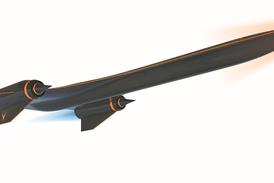IATA's director for industry charges and taxation, Jeff Poole, wants to see the airline industry break out of its annual cycle of conflict with airports and air navigation service providers and agree longer-term pricing structures
A sense of urgency and speed of implementation is now what is required from airports and air navigation service providers (ANSPs) in terms of cost efficiency improvements for their airline users.
There is little doubt that the words cost efficiency are now starting to be commonplace in the industry vocabulary, but IATA's mission with its airport and ANSP industry partners is to ensure that costs are driven down even further and faster in 2005.The need for significant cost reductions across the entire value chain of the air transport industry is undeniable. Cost savings were a top industry priority for IATA in 2004 and remain so in 2005. Expenditure on industry infrastructure – airports and ANSPs – represents about 10% of airline costs.
But while airline yields have declined dramatically in recent years, airports and ANSPs continue to live in different worlds and their increasing costs have for the most part simply been passed on to the airlines. The constant IATA message on the need for cost reductions and better cost efficiency is getting through and we are now seeing increased cost consciousness on the part of many of our industry partners.
Cost reductions
But the harsh truth is that much of the cost reductions achieved were due to increased traffic and other reasons rather than real, significant and sustainable reductions in their cost bases. There are many opportunities for further action to reduce costs, but for this we have to work together to evolve to a lower cost, more flexible industry. And we must take a holistic approach covering safety, capacity and performance, not just costs.
IATA's goal is to break out of the "cycle of annual conflict" of charges negotiations and is working towards the establishment of cost efficiency targets with airports and ANSPs, which embrace continuous improvements and which can be reflected in longer term pricing arrangements.
The agreement in 2004 with ANSP Airservices Australia was a landmark in this respect and is a model for future arrangements with other industry partners. Together we looked at the main drivers of our business: complete transparency allowed us to agree to a five-year pricing agreement that also addressed broader capacity, investment and operational and even social/government issues.
Establishing and agreeing the cost efficiency of a provider can be a daunting prospect: ANSPs operate in very complex and different environments and airports are notoriously reluctant to share many types of information.
Even the figures can be misleading: while European air traffic management co-ordinator Eurocontrol 2005 rates are 6.9% lower than the previous year, the reduction is primarily due to traffic growth and financial over-recovery in previous years – the cost base has in fact increased. So, IATA is pushing for a better set of tools to correctly determine performance parameters.
A critical first step towards cost efficiency targets is effective and critical benchmarking that would allow a more accurate assessment of individual cost efficiency, an area which historically has not been used as a performance indicator.
Benchmarking
IATA has developed a draft benchmarking framework based on three levels of assessment – fair allocation of costs, accountability for efficiency and effective planning and development, together with a draft performance scorecard that will present a clear and credible picture for all providers on a consistent and comparable basis.
However, for this to be successful, the participants must take full ownership of the process and results, and engage in rational discussions on longer-term business commitments to improve performance and cost efficiency, not arguments about the data and methodologies.
We can then set clear, credible and agreed targets for safety, capacity, performance and cost efficiency. IATA is working in close co-operation with CANSO (Civil Air Navigation Services Organisation) on behalf of the ANSPs on the subject of benchmarking and with Eurocontrol on a new cost efficiency planning process.
We have also opened discussions recently with the Airports Council International (ACI) on airport benchmarking. These are encouraging early steps for the industry as a whole to move in the same direction towards industry best practices in cost efficiency, but much remains to be done.
And the pace of critical change in the airline industry is such that improved cost efficiency, cost reductions and continuous performance improvements must be delivered with a real sense of urgency and priority – quite simply, airports and ANSPs must deliver much more cost efficiency, and faster.
Source: Airline Business























